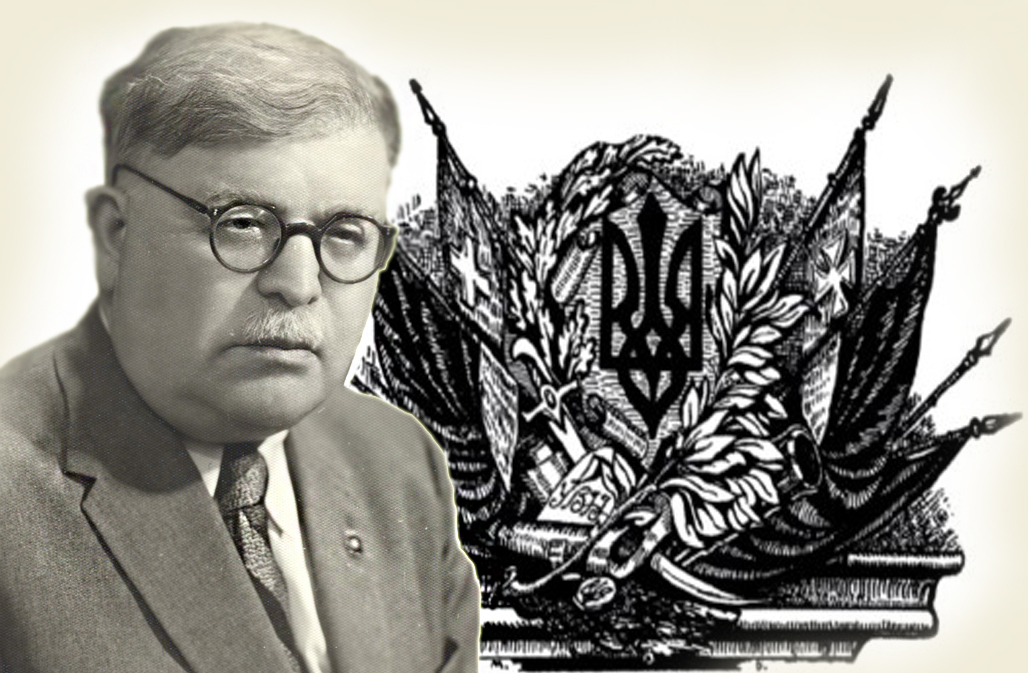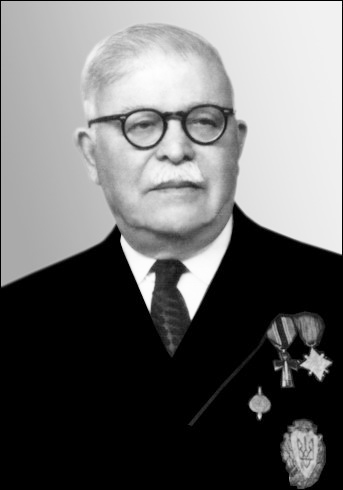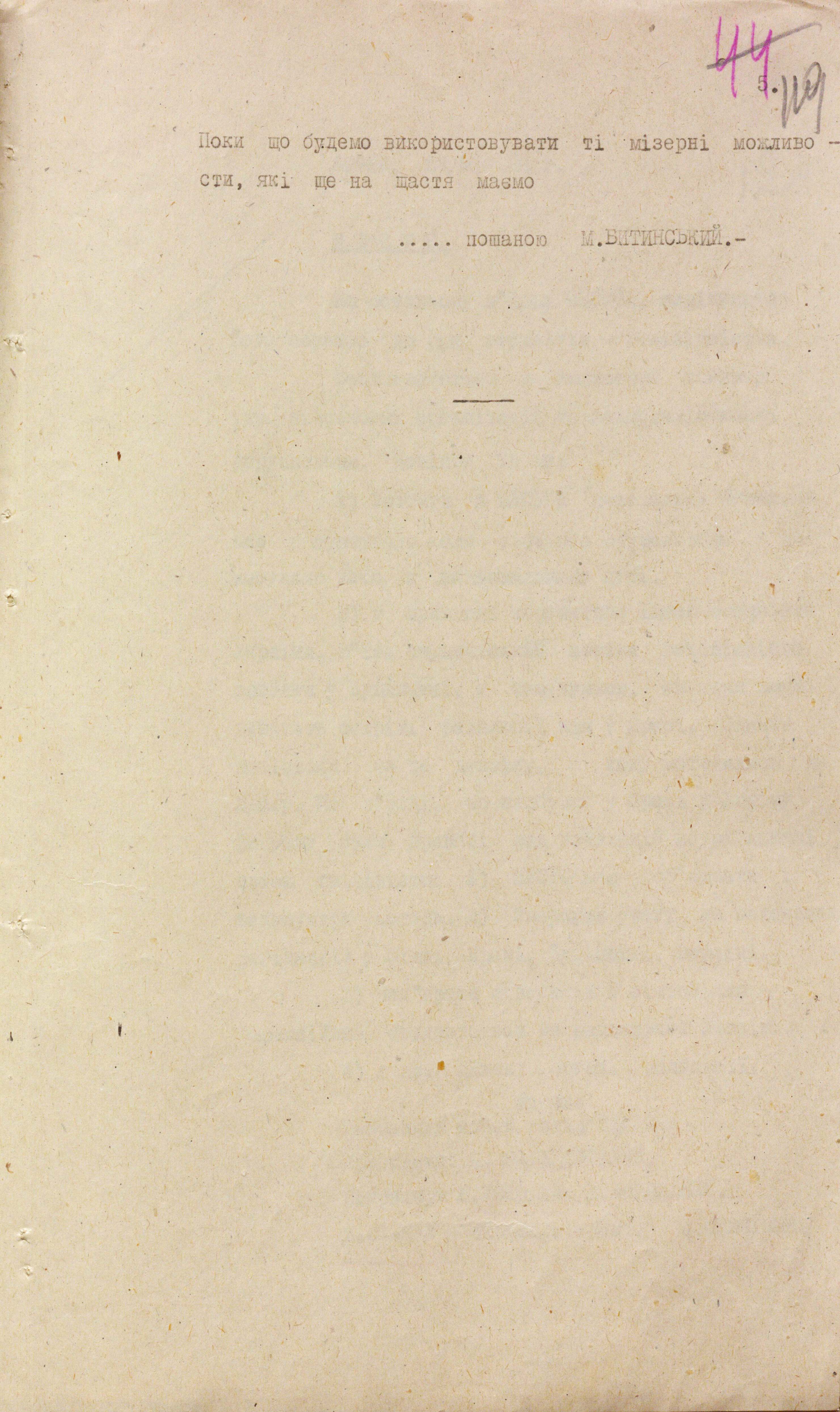Mykola Bytynskyi Against the "Russian World". Year 1933
6/24/2021

Among the archival documents of the Intelligence there was found a letter from a prominent Ukrainian heraldist, falerist, writer, publicist, graphic artist, vexillologist, researcher and emblem developer Mykola Bytynskyi about the publication in one of the Russian emigrant magazines in 1933 of an article about “Russia- a Liberator”. In the letter, he writes indignantly about the distortion of historical facts and points out that “no hostile agitation or propaganda, or any falsehood or provocation, must be left unanswered by us”. This letter, still unknown to historians, is a clear evidence that Ukrainian patriots have always been able to argue against the “Russian world”.
M. Bytynskyi's letter is in a many-volumed archival case on the Ukrainian People's Republic for the 1930s. It is typed on five sheets of paper, as a copy of a handwritten original. The text contains a number of mistakes that the Chekists made, apparently not fully understanding the author's handwriting. There are no additional comments on the letter in the case, so it is currently unknown under what circumstances it fell into the hands of NKVD officers, whom they had been monitoring and whose letters they intercepted. One can only suggest that he was one of former generals of the UPR Army, who lived abroad and maintained friendly contacts with M. Bytynskyi, also a former UPR military serviceman of the period of national liberation movement.
The letter begins with the address: “Honourable General”. And immediately the author goes to the heart of the matter, which is that the emigration magazine Voenny Vestnik had published an article to which Ukrainians should respond and make certain amendments. He points out that behind the publication is allegedly Colonel Dobrynin, a man of “stubborn, purely Russian reactionary views”. And then he writes about the monument in the Polish city of Kalisz, which, according to the publication in the magazine, allegedly glorifies Russia's role “as the liberator and patroness of Slavdom”.
Apparently, he meant the monument, which in Polish sources is called “Russian-Prussian Friendship”. It was built in honor of the Russian- Saxon – Polish army’s victory over the Swedish-Polish corps in the battle of Kalisz during the Great Northern War (1700-1721), when the coalitions of Sweden and Muscovy fought for dominance in Northern, Central and Eastern Europe. The monument was demolished in late 1926 at the request of the Kalisz community as it hurt national feelings of Poles.
Speaking about the way in which “all the stubborn, superstitious and false claims of all sorts of Muscovites about the role of Russia as the liberator and patroness of Slavdom” could be refuted, M. Bytynskyi points out: “Our counter arguments based on deeper historical studies, could begin with the period of “gathering of Rus”, destruction of the free Slavic republics of Novgorod and Pskov, through Russia's expansion into the Baltic and Black Seas through the Slavic lands of Poland, Ukraine, and the Cossacks to the “glorious liberation of the Slavs” in the Balkans”.
Citing these and other arguments, M. Bytynskyi writes that the true coverage of historical facts makes it possible to understand the following: “All those the Russian people’s “liberation actions” were in fact nothing more than Russia's proof of its reckless political selfishness and state imperialism through enslaving the Slavic peoples, which by historical circumstances stood in the way of the expansion and swelling of the semi-wild, semi-Byzantine Moscow state”.
M. Bytynskyi notes that all this has been repeatedly said, in particular in the 18th century, by one of the Ukrainian Hetmans. The author of the letter means Pylyp Orlyk, because he mentions his “manifestos”, “memoranda to European governments” and the famous political and legal treatise “Pacts and Constitutions of the Rights of Ukraine”, in which the Hetman considered the expansion of the Russian state a threat to European security.
 “At the same time, as the Muscovites are stirring again and making things as clear as mud” - the letter continues, - “we have to react again and again, for the hundredth and thousandth time, to find and proclaim our invincible truth, which we realized long ago, in liberation struggle of our ancestors. Russia has never been anyone's liberator, it has always been the greatest enemy of Slavdom, towards which it pursued its only programmatic missionary goal - to unite all Slavic peoples in the Russian sea, assimilating the Slavs or in the Novo- Russian despotic tsarist culture, or in the so-called proletarian culture of Moscow communism”.
“At the same time, as the Muscovites are stirring again and making things as clear as mud” - the letter continues, - “we have to react again and again, for the hundredth and thousandth time, to find and proclaim our invincible truth, which we realized long ago, in liberation struggle of our ancestors. Russia has never been anyone's liberator, it has always been the greatest enemy of Slavdom, towards which it pursued its only programmatic missionary goal - to unite all Slavic peoples in the Russian sea, assimilating the Slavs or in the Novo- Russian despotic tsarist culture, or in the so-called proletarian culture of Moscow communism”.
Why did the article worry M. Bytynskyi so much and why did it provoke such a reaction? The answer to this question is given by the author's biography.
Bytynskyi Mykola Overkovych was born in 1893 in the family of a clergyman in Podillya. He graduated from a pedagogical school and a school of industrial art in Kamianets-Podilskyi. During the First World War he was mobilized into the army of the Russian Empire. From 1919 he served in the Army of the Ukrainian People's Republic. He was the Commander of the Sapper Hundred of the 1st Ukrainian Rifle Division (later - the 6th Sich Rifle Division). M. Bytynsky’s Hundred played an important role in the defense of Zamostya from Bolshevik troops.
During his emigration in 1920–1923, he was in internment camps for soldiers of the Army of the Ukrainian People's Republic, first in Aleksandrov-Kuyavsky, and later in Shchypyorno near Kalisz. In the letter, he states that he remembers that monument in Kalisz very well. He then served as Chief of the Cultural and Educational Department of the Staff of the Division and the Camp. In 1921 he was promoted to the rank of Captain. He studied at the Sub-Department of History and Social Sciences of the Historical and Literary Department of the M. Drahomanov Ukrainian Higher Pedagogical Institute in Prague.
He later taught in Transcarpathia, where in 1939 he participated in the defense of the newly proclaimed independence of Carpathian Ukraine. From 1945 to 1950 he taught in camps for displaced persons in Germany, and from 1951- in Canada. To the end of his life he was engaged in public and cultural and educational activities, participated in the design and editing of Ukrainian books, design of coats of arms, flags, seals, awards, including the Simon Petliura’s Cross and the Military Cross, painted portraits, icons, prepared articles for various publications, he was a member of the Union of Ukrainian Journalists and the Union of Ukrainian Scientists, headed the Ukrainian Museum of Military History.

Therefore, this publication in the Voenny Vestnik could not escape M. Bytynskyi's attention. As a highly educated man who did care about everything concerning the Ukrainian issue, he tried to defend the historical truth under any circumstances.
Other documents of the archival case, where M. Bytynskyi's letter is located, do not make it possible to trace whether his reaction was published in emigrant publications. Nevertheless, even the above-mentioned quotes show his clear position of a professional historian and Ukrainian patriot and demonstrate how to repulse supporters of the "”Russian world”.
M. Bytynskyi’s letter on 5 pages of March 20, 1933
(BSA of the SZR of Ukraine. - F.1. – Case 12628. - V.4. - P. 115–119);
Drawing by Artur Orlyonov





